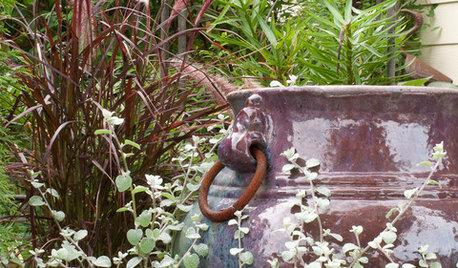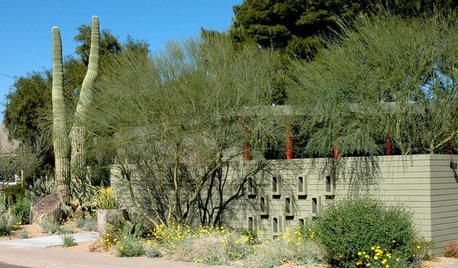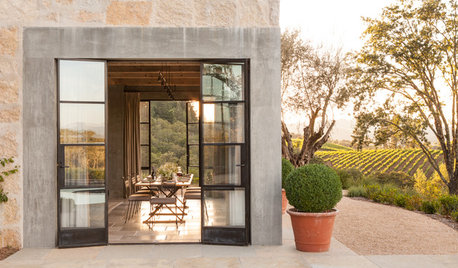Normal tree-form blue Lawson's?
wisconsitom
11 years ago
Related Stories

TREES11 Japanese Maples for Breathtaking Color and Form
With such a wide range to choose from, there’s a beautiful Japanese maple to suit almost any setting
Full Story
PLANTING IDEASGreat Garden Combo: Silver Sparkles Amid Purple and Blue Foliage
Get the look of this modern foundation planting by focusing on a restrained color palette with tasteful accents
Full Story
SIDE YARD IDEASNarrow Trees for Tight Garden Spaces
Boost interest in a side yard or another space-challenged area with the fragrance and color of these columnar trees
Full Story
LANDSCAPE DESIGNPretty Trees for Patios, Paths and Other Tight Spots
Choose trees for their size, shape and rate of growth — or shape them to fit your space. Here's how to get started
Full Story
GARDENING GUIDESGrow Your Own Privacy: How to Screen With Plants and Trees
Use living walls to lower your home and garden's exposure while boosting natural beauty in your landscape
Full Story
GARDENING GUIDESGreat Design Plant: Parkinsonia Florida
Blue palo verde's trunk and branches provide a beautiful backdrop to a spectacular spring show in the desert
Full Story
ARTThe Beauty of Bonsai — Living Art, Rooted in Harmony
Create your own emblem of nature's balance with an art form dating back 1,000 years
Full Story
RUSTIC STYLEHouzz Tour: A California Country Home With a French Accent
A new house mixes modern touches with the timeless beauty of stone walls, rustic doors, old olive trees — and vineyards all around
Full Story
PLANTING IDEASStretch the Budget, Seasons and Style: Add Conifers to Your Containers
Small, low-maintenance conifers are a boon for mixed containers — and you can transplant them to your garden when they’ve outgrown the pot
Full Story
LANDSCAPE DESIGNCelebrate a Sunny Climate With the Right Leafy Palm for Your Site
So you get freezes or floods. So your garden is small. These palms send excuses riding off into the tropical sunset
Full Story







Embothrium
Sara Malone Zone 9b
Related Professionals
Derry Landscape Architects & Landscape Designers · Southfield Landscape Architects & Landscape Designers · Addison Landscape Contractors · Centereach Landscape Contractors · Cicero Landscape Contractors · Coeur d'Alene Landscape Contractors · El Mirage Landscape Contractors · Fridley Landscape Contractors · Gainesville Landscape Contractors · Harrisburg Landscape Contractors · Reedley Landscape Contractors · Winter Gardens Landscape Contractors · Maple Heights Landscape Contractors · Camp Springs Landscape Contractors · Gulf Gate Estates Tree ServicesSara Malone Zone 9b
ken_adrian Adrian MI cold Z5
whaas_5a
coniferjoy
wisconsitomOriginal Author
Sara Malone Zone 9b
whaas_5a
Embothrium
Sara Malone Zone 9b
coniferjoy
Embothrium
coniferjoy
wisconsitomOriginal Author
Embothrium
wisconsitomOriginal Author
pasadena
wisconsitomOriginal Author
pasadena
botann
Embothrium
wisconsitomOriginal Author
Sara Malone Zone 9b
wisconsitomOriginal Author
Embothrium
wisconsitomOriginal Author
manastash
wisconsitomOriginal Author
Embothrium
wisconsitomOriginal Author
manastash
wisconsitomOriginal Author
botann
wisconsitomOriginal Author